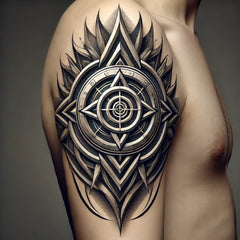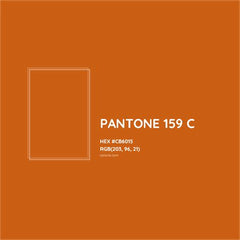Your cart is empty now.

Trademark Dilution and Tarnishment - famous examples, including Tiffany, Rolls Royce and Apple
- 13 May, 2024
- Nyall Engfield
Trademark Dilution and Tarnishment - famous examples, including Tiffany, Rolls Royce and Apple
Trademark dilution is a concept where a distinctive or famous trademark is used in a way that diminishes its uniqueness and its association with the original product or service. This can happen even without any direct competition between the products or confusion among consumers. Here are some of the most famous examples of trademark dilution:
-
Tiffany & Co. vs. Costco - In this case, Costco was accused of using the word "Tiffany" to describe certain styles of engagement rings that were not actually products of Tiffany & Co. Tiffany argued that this use diluted its famous trademark. The court ruled in favor of Tiffany, finding that Costco's use of the term could confuse customers and dilute the Tiffany trademark.

-
Victoria's Secret vs. Victor's Little Secret - Victoria's Secret sued a store named "Victor's Little Secret," which sold lingerie and adult novelties. The Supreme Court of the United States held that trademark dilution does not require actual harm, but rather the likelihood of dilution. The name of the store was eventually changed to "Cathy's Little Secret" to avoid association with the Victoria's Secret brand.

-
Volkswagen vs. Rolls Royce - This dispute arose from the use of the "Rolls Royce" trademark after Volkswagen acquired Rolls Royce cars but not the rights to the Rolls Royce brand, which were acquired by BMW. Volkswagen’s use of the name was seen as potentially diluting the Rolls Royce trademark, known worldwide for luxury.
-
The Volkswagen and Rolls-Royce trademark dispute centers around the rights to the Rolls-Royce name and logo following the breakup of Rolls-Royce Motors in the late 1990s. Here’s a detailed look at the sequence of events and the disputes that arose:
-
1998: The Split of Rolls-Royce Motors
- Background: Rolls-Royce Motors, which produced Rolls-Royce and Bentley cars, was owned by Vickers PLC. In 1998, Vickers decided to sell the company.
- Participants: Volkswagen AG bid for Rolls-Royce Motors and won, acquiring the assets, including the Crewe factory and the designs, models, and production rights to Rolls-Royce and Bentley cars.
-
Licensing of the Trademarks
- Key Issue: Although Volkswagen AG bought the physical assets of Rolls-Royce Motors, it did not obtain the rights to the Rolls-Royce brand name and logo. These trademarks were owned by Rolls-Royce PLC, the aerospace company, which licensed them to Rolls-Royce Motors.
- Complication: Rolls-Royce PLC decided to license the Rolls-Royce car brand and logo to BMW, not Volkswagen, effective from 2003. BMW offered £340 million, which was considered more favorable in strategic terms by Rolls-Royce PLC.
-
Interim Period 1998-2003
- Arrangement: From 1998 until the end of 2002, Volkswagen produced cars under both the Bentley and Rolls-Royce names. However, it was clear that they would lose the rights to use the Rolls-Royce name and logo after 2002.
- Development: Volkswagen focused on strengthening Bentley, which they would retain, while BMW prepared to take over the production of Rolls-Royce branded cars.
-
2003 Onwards: Brand Realignment
- Brand Separation: Starting from 2003, BMW began producing Rolls-Royce cars at a new facility in Goodwood, England, thus making use of the Rolls-Royce trademark that it had licensed.
- Volkswagen’s Focus: Volkswagen concentrated on Bentley, successfully reinvigorating the brand and increasing its market share.
-
Outcome and Impact
- Resolution: There was no dilution lawsuit per se, but rather a complex situation involving the separation of brand rights from manufacturing assets. Volkswagen managed Bentley, and BMW took over Rolls-Royce without any further legal conflict regarding the use of the trademarks.
- Market Dynamics: Both Bentley and Rolls-Royce have thrived under their respective new managements. Volkswagen has turned Bentley into a major player in the luxury car segment, while BMW has maintained the prestige and high standards of Rolls-Royce.
This situation illustrates the intricate relationships between corporate strategy, brand management, and intellectual property rights in the global automotive industry. It also underscores the importance of trademarks and the complexities involved when multiple companies have legitimate interests in iconic brands.
-
-
McDonald's vs. McSleep - In a classic case of dilution, McDonald's sued a hotel chain named McSleep, arguing that the use of "Mc" in their name diluted McDonald's branding, which extensively uses the "Mc" prefix. McDonald's won the case, reinforcing its control over the "Mc" prefix in various industries.
-
Apple vs. Apple Corps - Apple Inc., the technology company, and Apple Corps, the holding company founded by The Beatles, have had several legal disputes over trademark issues. The disputes centered around the use of the "Apple" name and logo, with both parties claiming dilution of their brands in different sectors (technology vs. music). This was especially problematic when Apple entered the music space with the iPod.
-
The disputes between Apple Inc., the technology giant, and Apple Corps, the music company founded by The Beatles, span several decades and involve multiple legal battles over trademark rights. Here’s a detailed look at these disputes:
-
1978: The Initial Lawsuit
- Background: Apple Corps was established in 1968 and had a logo featuring a Granny Smith apple. Apple Computer (later Apple Inc.) was founded in 1976 and adopted an apple logo as well.
- Dispute: Apple Corps sued Apple Computer for trademark infringement in 1978, arguing that the computer company's name and logo violated their trademark as both companies were involved in the music business (Apple Computer's computers could play music).
- Outcome: The case was settled in 1981 with Apple Computer agreeing to pay Apple Corps $80,000 and promising not to enter the music business.
-
1989: Breach of Agreement
- Background: As Apple Computer evolved, it increasingly integrated music-related capabilities into its products, including MIDI and sound capabilities in its computers.
- Dispute: Apple Corps sued again, claiming Apple Computer breached the 1981 agreement.
- Outcome: The companies settled in 1991, with Apple Computer paying $26.5 million and agreeing on specific areas of operations to avoid direct competition.
-
2003: Entry into Music Business
- Background: The launch of iTunes and the iPod by Apple Inc. represented a significant foray into the music business.
- Dispute: Apple Corps filed another lawsuit in 2003, arguing that Apple Inc.'s move into music distribution and sales directly violated previous agreements.
- Outcome: In 2006, a UK court ruled in favor of Apple Inc., stating that the use of the apple logo on iTunes was not a breach of the trademark agreement, as it was associated with the software, not the music itself.
-
2007: Final Settlement
- Background: Both companies decided to prevent further disputes and streamline their coexistence.
- Dispute: Rather than a dispute, this phase involved negotiation to create a new agreement that defined their respective rights to the "Apple" trademark.
- Outcome: Apple Inc. agreed to own all the trademarks related to "Apple" and licensed certain trademarks back to Apple Corps. The terms were not fully disclosed, but the agreement reportedly involved a large payment to Apple Corps.
These disputes highlight the challenges and complexities of trademark law, especially when multiple companies with high profiles and significant resources are involved in evolving industries. The final settlement allowed both entities to continue their operations without further legal hindrance related to the trademark issues.
-
These examples highlight how companies protect their trademarks not just from direct competition or confusion, but also from other uses that might weaken their brand's distinctiveness or prestige.
Search
Archive
- August 2024
-
- How to avoid being locked out of your Amazon product listings
- If you tattoo a trademark on your body - Skinvertising- can you be sued?
- Burnt Orange - University of Texas Trademark of Pantone 159
- Jungle Superheroes - famous characters similar to Tarzan and the difficulties of maintaining a monopoly
- What happens to the trademark rights if the renewal is missed



